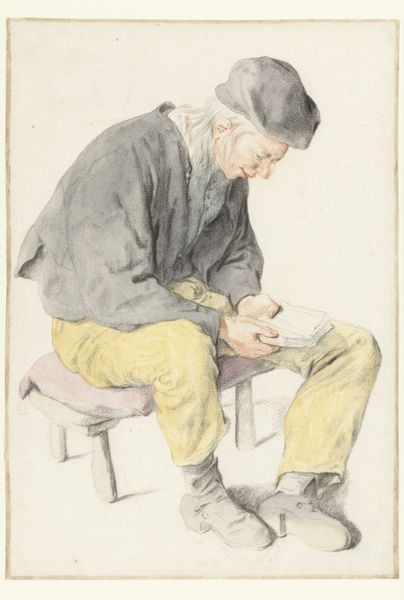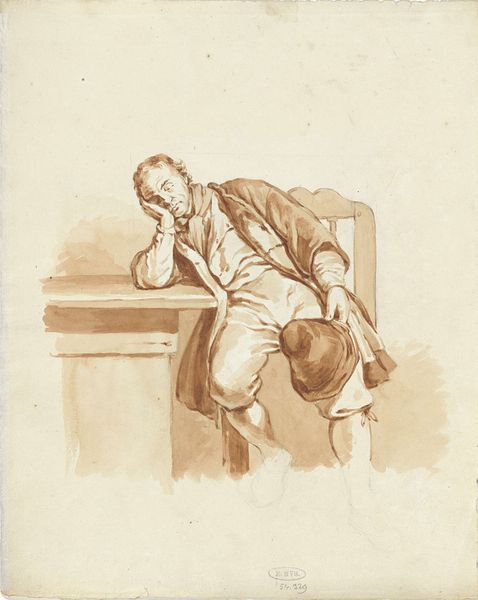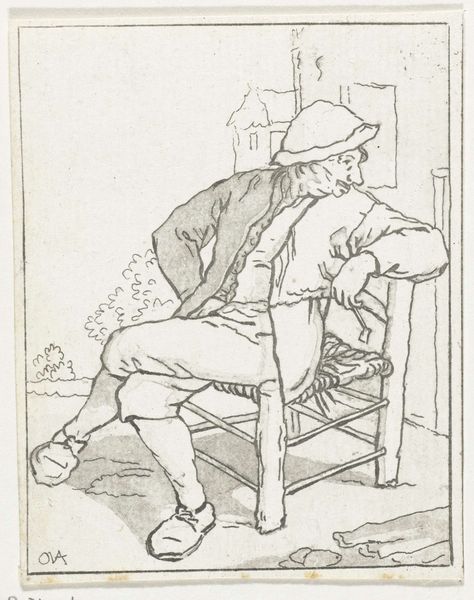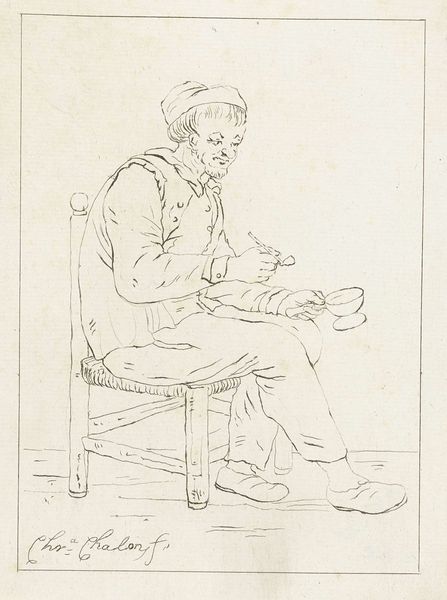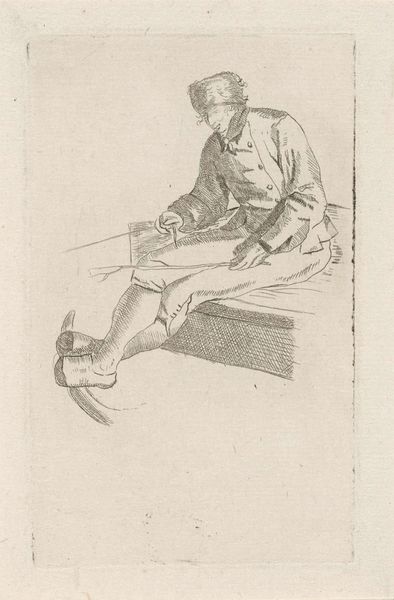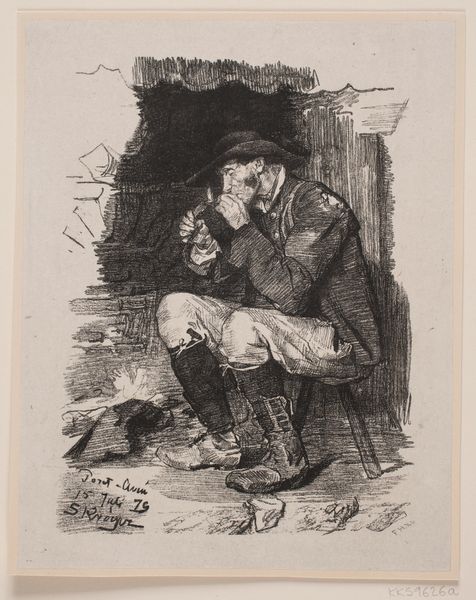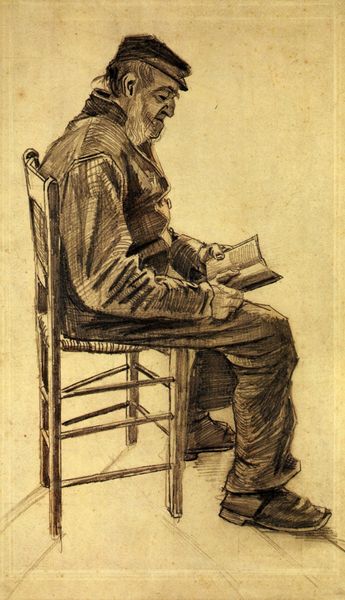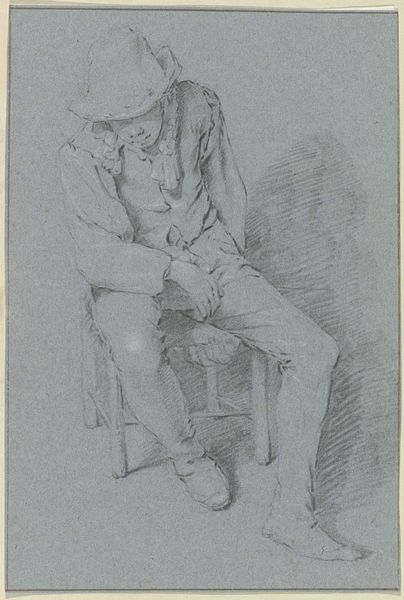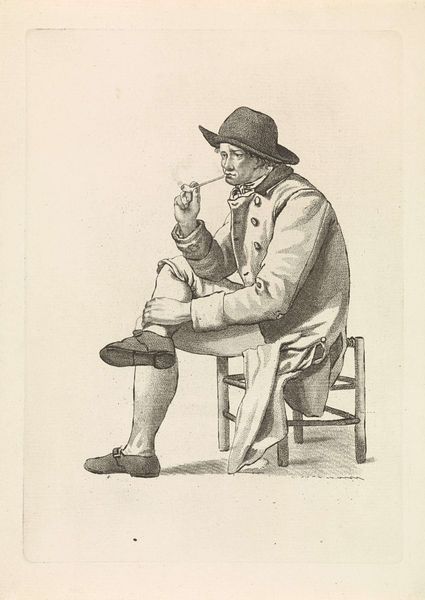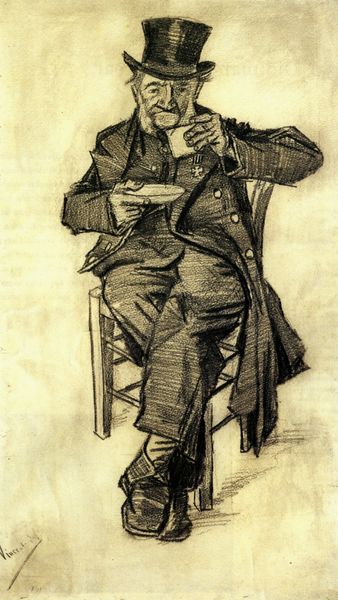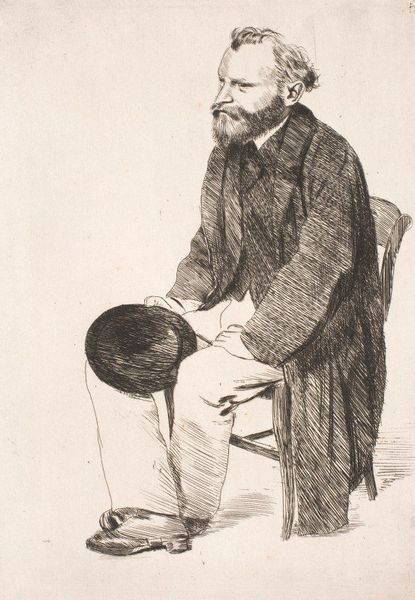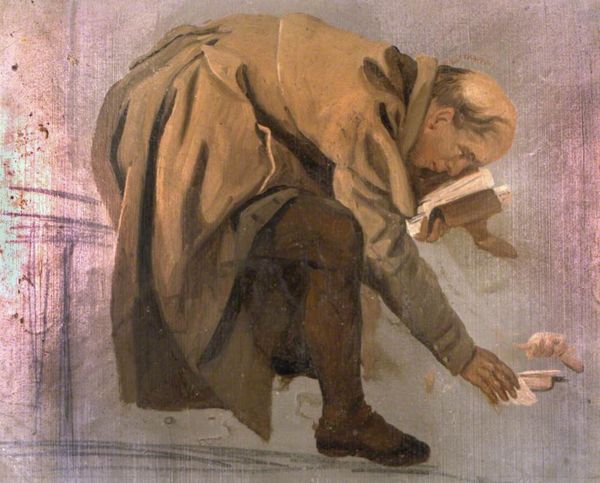
painting, watercolor
#
portrait
#
painting
#
oil painting
#
watercolor
#
romanticism
#
genre-painting
#
portrait art
#
realism
Copyright: Public domain
Editor: We're looking at "The Schoolmaster," an 1826 watercolor and oil painting by George Harvey. He is holding a switch. There's a kind of somber tone, emphasized by the muted browns and greens. What stands out to you in terms of the visual elements? Curator: The painting's structural success rests on the artist’s control of line and volume. Notice how Harvey uses the lines of the figure's coat, legs, and even the table, to create a series of carefully balanced diagonals. This visual rhythm animates the scene. Then there is the treatment of light - it seems diffused, which softens forms, giving the whole image a unified atmospheric effect. Have you observed how this handling affects the three-dimensional character of objects within the frame? Editor: I do see the way the light kind of washes over everything, but can you elaborate on what this does to the volume of the objects? Curator: Observe closely. The muted lighting diminishes stark contrasts, especially on the face and garments. This creates a flatter picture plane and a more homogeneous treatment of space, emphasizing a uniformity of experience as implied by the composition. The painting isn't trying to replicate the three-dimensional space, it’s transforming it into a composition that highlights the material quality of the brushstrokes. Editor: So, it’s less about replicating reality and more about Harvey playing with how we perceive form and texture using paint itself. I learned a lot, thank you. Curator: Indeed. It invites us to consider the translation of form onto the flat surface, appreciating how artistic expression lies within that manipulation of medium.
Comments
No comments
Be the first to comment and join the conversation on the ultimate creative platform.
